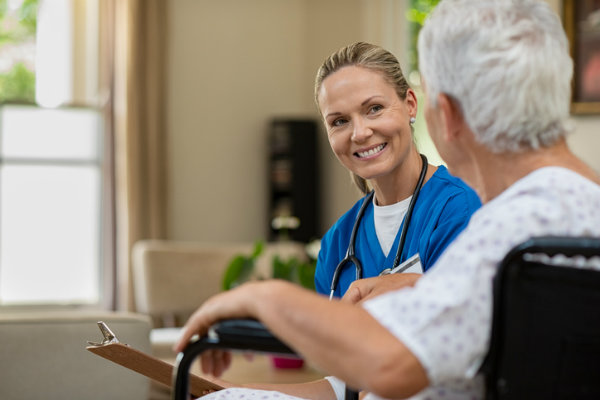The nursing profession has undergone significant transformations over the years, particularly in terms of gender representation. Traditionally seen as a female-dominated field, nursing today is becoming increasingly inclusive of all genders. This shift is driven by a range of social, cultural, and economic factors, as well as the changing needs of the healthcare industry. In this blog, we’ll explore the gender trends in nursing, focusing on how nursing courses and training, such as those offered in Kolkata, are helping to shape the future of the profession.
The Historical Gender Dynamics of Nursing
Nursing has traditionally been associated with women, dating back to the earliest formalized nursing practices. The image of Florence Nightingale, who is often credited as the founder of modern nursing, reinforced the notion that nursing was a vocation tied to femininity, care, and compassion. Throughout the 19th and early 20th centuries, nursing was largely considered a female profession, with men often excluded from the field or relegated to specialized areas such as military or psychiatric nursing.
However, as society began to evolve and recognize the importance of gender equality, more opportunities opened up for men in nursing. This shift was particularly evident during the mid-20th century, when the healthcare system began to expand, and nursing became a more structured and professionalized field.
The Current State of Gender Representation in Nursing
Today, the nursing profession is experiencing a growing trend of gender diversification. While women still represent the majority of nurses, the percentage of men entering nursing courses and nursing training programs is steadily increasing. According to data from various healthcare organizations, male nurses now comprise approximately 10-15% of the nursing workforce globally, a figure that has seen significant growth in the past few decades.
In countries like the United States, the United Kingdom, and Canada, male nurses are becoming more visible, and the stigma surrounding men in nursing is gradually diminishing. In India, including metropolitan cities like Kolkata, there has been a notable rise in the number of men enrolling in nursing courses and undergoing formal nursing training.
Gender Equality in Nursing Education: A Growing Focus
The growth in male participation in nursing is reflected in nursing schools and training programs worldwide. In Kolkata, a city known for its rich academic heritage, numerous institutions now offer nursing courses that cater to individuals of all genders. These institutions are increasingly focused on creating inclusive environments where both men and women are encouraged to pursue careers in nursing.
In addition to nursing degrees, many training programs offer specialized certifications and diplomas, giving students a wide range of options to tailor their education to specific areas of interest, such as critical care, pediatrics, or surgical nursing. These programs are helping to break down traditional gender stereotypes, fostering a more diverse nursing workforce.
The inclusion of men in nursing courses in Kolkata has led to a shift in the way nursing training is approached. Training programs are becoming more gender-neutral, with an emphasis on professionalism and skill development, rather than focusing on gendered expectations. This approach encourages students to pursue their passion for healthcare without the limitations of societal stereotypes.
Challenges Still to Overcome
While the increasing gender diversity in nursing is a positive development, challenges remain. In some parts of the world, including rural areas of India, nursing is still seen as a female profession, and male nurses may face prejudice or stereotyping from patients, families, and even colleagues. This can create barriers to men’s full participation in the profession, especially in certain specialties like pediatric nursing, where gender biases may be more pronounced.
Moreover, the nursing profession continues to face issues related to gender pay gaps and career advancement opportunities. Female nurses, despite making up the majority of the workforce, often face systemic obstacles when it comes to leadership roles and professional development. These disparities are not always tied to gender but to institutional and structural challenges that affect both men and women.
The Importance of Gender Diversity in Nursing
The growing representation of men in nursing is important for several reasons. A diverse nursing workforce can improve patient care by providing a broader range of perspectives and enhancing cultural competence. Male nurses, for instance, may be more comfortable working with male patients or in situations where cultural norms require a gender-specific approach to care. This diversity also helps to dispel stereotypes about nursing being a “female” profession, which can encourage more individuals from different backgrounds to consider nursing as a viable career.
Furthermore, gender diversity in nursing also reflects the changing nature of healthcare itself. The demand for nurses continues to rise globally, and the profession needs to tap into the full talent pool, regardless of gender. By encouraging men to pursue nursing, institutions can help meet the growing healthcare needs of an aging population and a more diverse society.
Conclusion
The gender dynamics in the nursing profession have shifted significantly over the years, with more men entering nursing courses and training programs, including those offered in Kolkata. This shift is not only breaking down long-standing stereotypes but also enriching the profession with a wider range of experiences and skills. While there are still challenges to overcome, the future of nursing looks promising as the profession becomes more inclusive and representative of society as a whole.
For those considering a career in nursing, whether male or female, enrolling in a nursing course in Kolkata or elsewhere is an excellent way to contribute to the evolving healthcare landscape. Nursing offers not only a rewarding career but also the opportunity to make a meaningful difference in the lives of patients and communities.




